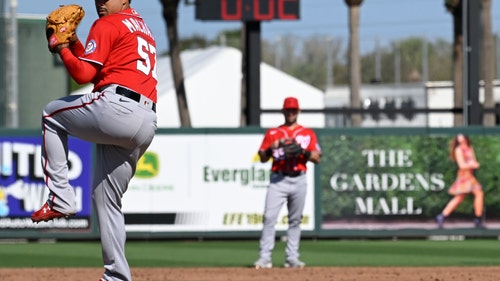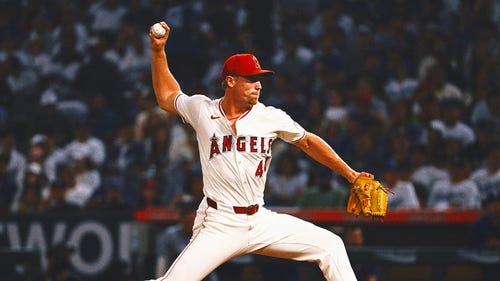
How the cutter grip can affect arm strength
More than one organization has banned the cutter at one time or another. But it's barely one pitch, and you probably wouldn't want to have banned Mariano Rivera from throwing that pitch. Turns out, looking at the grip on the baseball might help us differentiate between risky and less risky cutters.
Dan Duquette has banned the cutter from the Baltimore organization. Explore his reasons, and you start to uncover that not all cutters are made alike.
The first stated reason was about outcomes. “Why don’t you take a look at the chart with the average against cutters in the big leagues, batting average against and then come back and tell me that that’s a great pitch,” Duquette said back then. Unfortunately, when stacked against fastballs, the pitch is actually decent. BACON is batting average on contact, SLGCON is slugging percentage on contact:
| BACON | SLGCON | |
|---|---|---|
| 4-Seam | 0.328 | 0.542 |
| 2-Seam | 0.324 | 0.496 |
| Cutter | 0.313 | 0.493 |
| Slider | 0.311 | 0.499 |
| Changeup | 0.303 | 0.493 |
| Curveball | 0.316 | 0.491 |
Sliders and changeups do better, but -- theoretically at least -- you can throw the cutter more often than those pitches. If it's a fastball. More on this later.
The second stated reason was about fastball velocity and arm health. Increased cutter usage led to lower radar gun readings and lower arm strength, Duquette and Director of Pitching Development Rick Peterson felt. "What happens is you start to get off to the side of the baseball (with your grip) and then you’re no longer consistently behind the baseball," Peterson said of the way the cutter steals velocity from a fastball.
The thing is, there are two vastly different types of cutters, and grip factors in. When Duquette was asked about pitchers that had done well with the pitch, Mariano Rivera in particular, he pointed to the difference between a "cutter" and a "cut fastball." "Name me all the pitchers in the big leagues that make a living with a cut fastball. Rivera's is a fastball. It moves," he said.
That might seem like semantics, but it's probably not. In a conversation with Adam Ottavino about his cutter last week, the Rockies closer mentioned that he'd modeled his grip and action after Rivera, who threw his cutter with a four-seam grip. Watch him describe his new pitch, and you see how it's more appropriately named a cut fastball, because it has so much in common with a four-seamer. Really, all Ottavino did was change the angle of the seams.
You'll hear him call it a cutter. But that's a cut fastball.
Now listen to Jake Peavy talk about his cutter, right above his grips for his slider and his cutter.
"Even though they are very similar, the cutter is a version of a fastball so you're going to throw it more like you throw a fastball," Peavy said. "You want the cutter to be as much like a fastball as it can be."
You can see that the grips below (slider on the left, cutter on the right) are very similar, but Peavy's hand position upon release is very different.
These are the same pitches? We call them both cutters, one has a slider grip and the other has a fastball grip and their releases vary from pitcher to pitcher.
Even if you differentiate between the two pitches by calling one a cut fastball and one a cutter, it's hard to prove with numbers that the cutter steals fastball velocity.
But when you talk to pitchers, a different story emerges. Dan Haren admitted to throwing the slider-grip cutter, and felt that it "absolutely" led to velocity loss (he just didn't care because he was already losing velocity). Zack Greinke threw a cutter and a slider and felt they morphed into the same pitch, which sounds exactly like what Peterson was afraid of. Jesse Chavez showed the slider grip on his cutter, admitted that he'd heard it led to lower velocity, but said he made sure not to "manipulate" the ball. Ben Badler at Baseball America found that scouts also felt that cutters led to velocity loss.
The thing is, these pitches with different grips and different release points shouldn't maybe be lumped together. Look at Ottavino's cut fastball release and grip. Now listen to what Madison Bumgarner said before a game against the Rockies last week: "I used to keep my fingers further apart, but then I put them together. The first time the pitch was too big, but now I manage." He modeled the before (left) and after (right) on his cutter grips:
Don't think he's figured it all out, though. Bumgarner's cutter is slower and bigger now than it was last year, and he said he's working on it right now. "I'm getting around it, and my delivery is a little side to side, so it's not as hard as I'd like it to be," he said before a game against the Diamondbacks this year. Here's a (dominant) slider-grip cutter guy basically quoting Rick Peterson's fears.
But it hasn't cost Bumgarner fastball velocity, and both Bumgarner and Tim Hudson, a locker over, didn't think much of the idea of banning the cutter to preserve fastball velocity. "Am I going to be pitching for this organization next year?" Hudson offered, and: "We all lose fastball velocity."
It might feel impossible to classify the cutter and cut fastball differently now. Bumgarner changed the finger placement on his pitch by about a centimeter and suddenly the pitch was bigger, meaning it had more drop and was more like your traditional slider. It was a cutter last year; it might be a slider this year. Short of measuring the pitchers' finger placement on the ball, how would we study this?
Maybe we can't. Maybe we can't say anything definitive about the cutter because of these little differences that mean a lot. The grip alone wouldn't solve the question -- rookie Mariner Tyler Olson said he throws his "fastball" with a four-seam grip and a "cutter release," and I mean what do you call that pitch? But if a great pitcher like Bumgarner can have trouble staying behind the one-seam grip, maybe the grip often determines the release.
One thing might also become clear: There's little reason to make a sweeping generalization about the pitch without at least acknowledging the differences within the category.
Bumgarner's cutter goes 4 mph slower than his fastball and has almost 5 inches more drop. Ottavino's cutter goes about 2 mph slower than his fastball and doesn't even have a full inch more drop than his two-seamer. There are bigger extremes -- Jake Arrieta even called his slider a cutter at least once, for instance -- but these pitches seem different enough that you could argue they should be classified differently.
Hudson called the four-seam cut fastball grip "old school" and said the key was that it rolled more off the middle finger. Let's call that the cut fastball and consider allowing our young pitchers in search of a differently moving pitch (say, a Kevin Gausman) to take a look at it. This pitch is just a couple miles per hour slower than the four-seamer, but it doesn't have the tail that four-seam (4 inches of arm-side run on average) and two-seam fastballs (6 inches of run) show.
Let's then call the one-seam slider-grip cutter a "baby slider" so that we don't confuse our terms. This pitch goes 4 or more mph slower than a fastball and has more drop. It might be problematic for velocity, or it might not, if your pitcher can stay behind the ball. Maybe discourage your developing youngsters from the pitch, but let your Brandon McCarthy types throw it when they'd like to keep their career on track.
Amazing what a few centimeters of finger placement can mean for a pitch.












